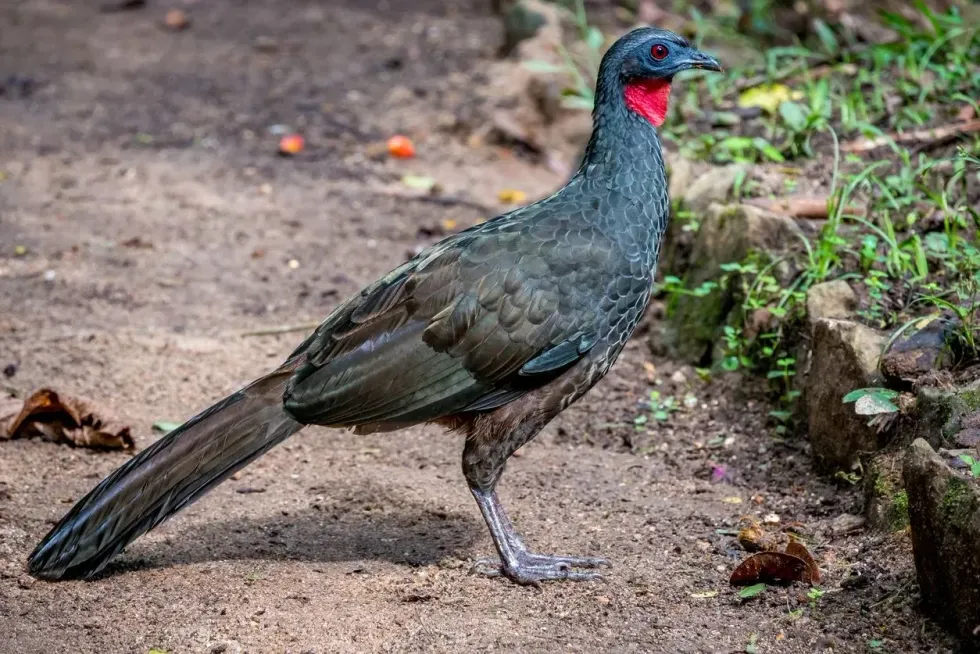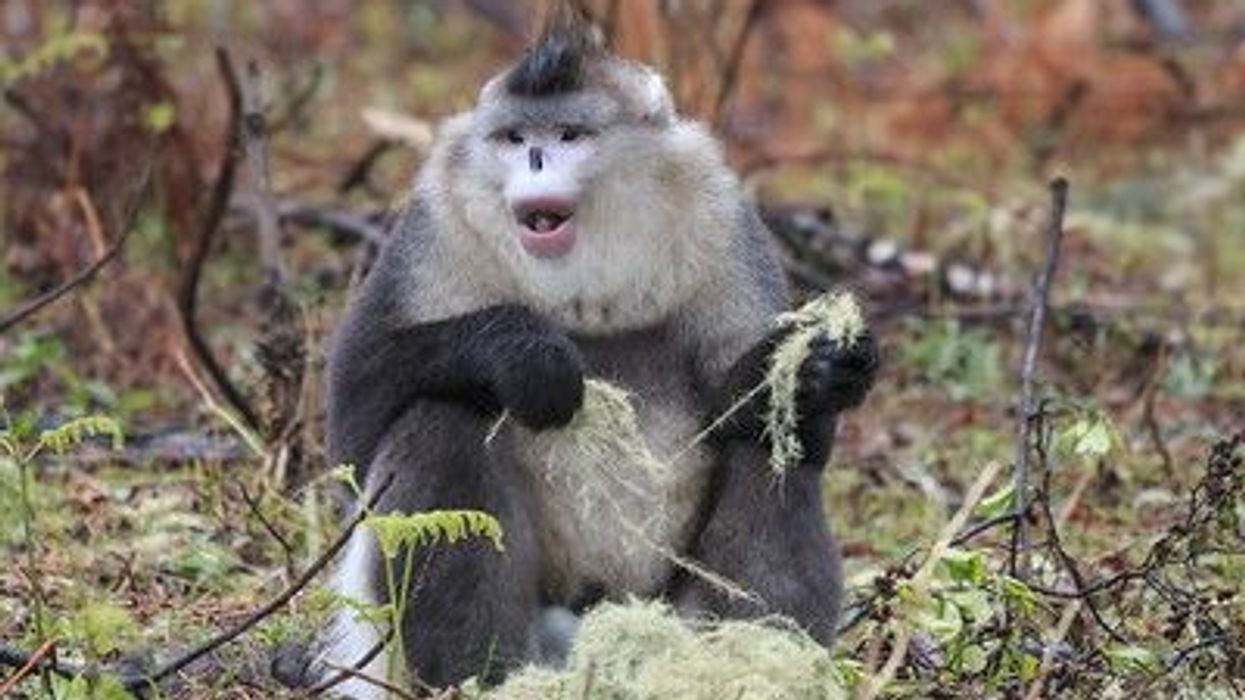Guans are large arboreal birds that have a similar appearance to turkeys. There are around 24 species of guans under seven different genera. Some of these species, like the crested guan, is regarded as a game bird.
These birds live in Central and South America, along with the adjacent Caribbean islands. The range of different species often overlaps with one another.
Their preferred habitats include subtropical forests, montane evergreen forests, and wetlands. They usually roost on tree trunks and exist in small social groups. These birds have a range of vocalizations to communicate with each other.
Their breeding season ranges from March to July. After mating, the females lay a clutch of one to four eggs.
The females incubate the eggs while the males defend the territories. The chicks are precocial or well-developed at birth. International Union for Conservation of Nature or IUCN Red List has listed most of the species of Guan as species of Least Concern.
However, most of the species are decreasing in numbers due to the destruction of their habitat, along with hunting, and climate change. Read on to know more fun facts about guans.
If you liked reading about guan facts, check out these peacock and yellow warbler facts!
Guan Interesting Facts
What type of animal is a guan?
Guan is a species of bird that belongs to the Cracidae family. These arboreal birds form the largest group of Cracids.
What class of animal does a guan belong to?
Guan belongs to the class Aves.
How many guans are there in the world?
The exact number 0f individuals present in the world is not known. However, they have a decreasing population trend almost in all the species. The reasons are habitat destruction, intensive hunting, and climate change.
Where does a guan live?
Guans are mostly found in Central and South America. They inhabit the region extending from the southern parts of Mexico to western Ecuador and southern parts of Venezuela.
They also reside in the Yucatan Peninsula, Peru, Lambayeque, Cajamarca, Colombia, Argentina, Northern Andes, south of Ecuador, and Panama. In Central America, these birds inhabit Costa Rica and Guatemala. A few of the species are also distributed in the Caribbean islands.
What is a guan's habitat?
Guans mostly inhabit subtropical forests characterized by broadleaf, evergreen trees. These forests have a dense canopy, a thick ground cover, and a high level of annual rainfall. Guan habitat also comprises montane evergreen forests.
These forests are located in the mountains at elevations of 4921 ft (1500 m). These regions experience high rainfall, humidity, and low temperature. Some reside in the wetlands which are lowlands flooded with water.
Who do guans live with?
These birds are quite social and are usually found in small groups of 6-12 individuals. Their groups are commonly referred to as flocks.
How long does a guan live?
Not much is known about their exact lifespan. However, birds belonging to the Cracidae family generally live up to 20 years.
How do they reproduce?
Some species of guans are monogamous while the others are polygamous, having more than one partner. Their breeding season ranges from March to July. Males usually vocalize their mating calls to attract the females.
The guan nest is built with twigs in the trees, at a higher elevation from the ground. The female lays around 1 to 4 eggs and incubates them for 24-28 days. Guan eggs are usually white in color.
The females are involved in nurturing the chicks while the males defend the territory. The chicks are precocious or well-developed at birth. These birds reach reproductive maturity at two years of age.
What is their conservation status?
The International Union for Conservation of Nature or IUCN Red List has listed most of the species of guan as species of Least Concern. However, some of the species are listed as Endangered, Near Threatened, and Vulnerable with a couple of species being Critically Endangered.
Guan Fun Facts
What do guans look like?

Their appearance varies from one species to the other with some similarities. They are large birds, similar in size to pheasants and turkeys.
Crested guan has brown plumage with white spots, a long tail, and their legs are pink in color. It also has a crest on the head and a red wattle on the neck. Black guan has black plumage with pinkish-red legs.
The skin around its face is blue in color. The bearded guan has brown plumage, a reddish-brown tail, and red legs. It also has a red dewlap or fold of skin around its neck.
The horned guan has black plumage, a yellow bill, and white stripes on the tail. It also has a prominent red horn on the top of its head.
How cute are they?
Their cuteness usually stems from their appearance. The presence of contrasting colors on the body, long tail, crest on the head, and throat wattle make them attractive.
How do they communicate?
They usually communicate through a range of vocalizations. Their calls are usually sharp, amplified due to the presence of a long trachea or air chambers inside the neck.
They are heard at dawn or during late hours. Their calls are more rapid and high-pitched when they encounter some sort of danger. The sound of the crested guan is described as a loud 'plea' or 'quonk'.
The female horned guan emits a guttural type of call, while the males have a slow and low-pitched call. Male guans also exhibit a variety of threat displays to ward off other males from their territory.
How big is a guan?
The length of their body is 25.5 in (65 cm) on average. They are bigger than green jays (9.8-11.4 in).
How fast can a guan fly?
Their exact speed is not known. However, they fly fast but not for long distances. They usually fly in a flap and glide motion.
How much does a guan weigh?
A guan weighs around 4.4 lb (2 kg) on average.
What are their male and female names of the species?
Scientists do not have specific names to refer to the male and female guans. They are commonly referred to as male guans and female guans.
What would you call a baby guan?
It is commonly referred to as a chick.
What do they eat?
They are omnivores and feed on seeds, fruits, flowers, and leaves. Guan diet also includes a variety of insects and other invertebrates like worms, crabs, spiders, and beetles. They obtain their food sources from the branches of the trees or while foraging on the ground.
Are they dangerous?
They aren't dangerous to humans. However, male guans are quite territorial and aggressive toward other males. They often engage in threat displays and fights among themselves.
Would they make a good pet?
No, they do not make good pets. They are wild birds and aggressive in nature. Hence, they shouldn't be kept in captivity. It is also illegal to keep them as pets in some parts of the world.
Did you know...
The horned guan is not considered to be a true guan. It belongs to a subfamily, Oreophasinae. These birds are the only survivors of an ancient group of cracids. They have been evolving for around 20-40 million years.
Types of guans
There are around 24 species of guans, classified into seven different genera. The genera are Aburria, Chamaepetes, Oreophasis, Penelope, Penelopina, Pipile, and Ortalis. Some of the species are black guan, Andean guan, crested guan, red-faced guan, horned guan, and bearded guan.
The Guan bird's symbolism
According to the Chinese symbolism of birds, the guan symbolizes a desire for a job promotion.
Here at Kidadl, we have carefully created lots of interesting family-friendly animal facts for everyone to discover! Learn more about some other birds including pelican, or great green macaw.
You can even occupy yourself at home by drawing one on our Guan coloring pages.










